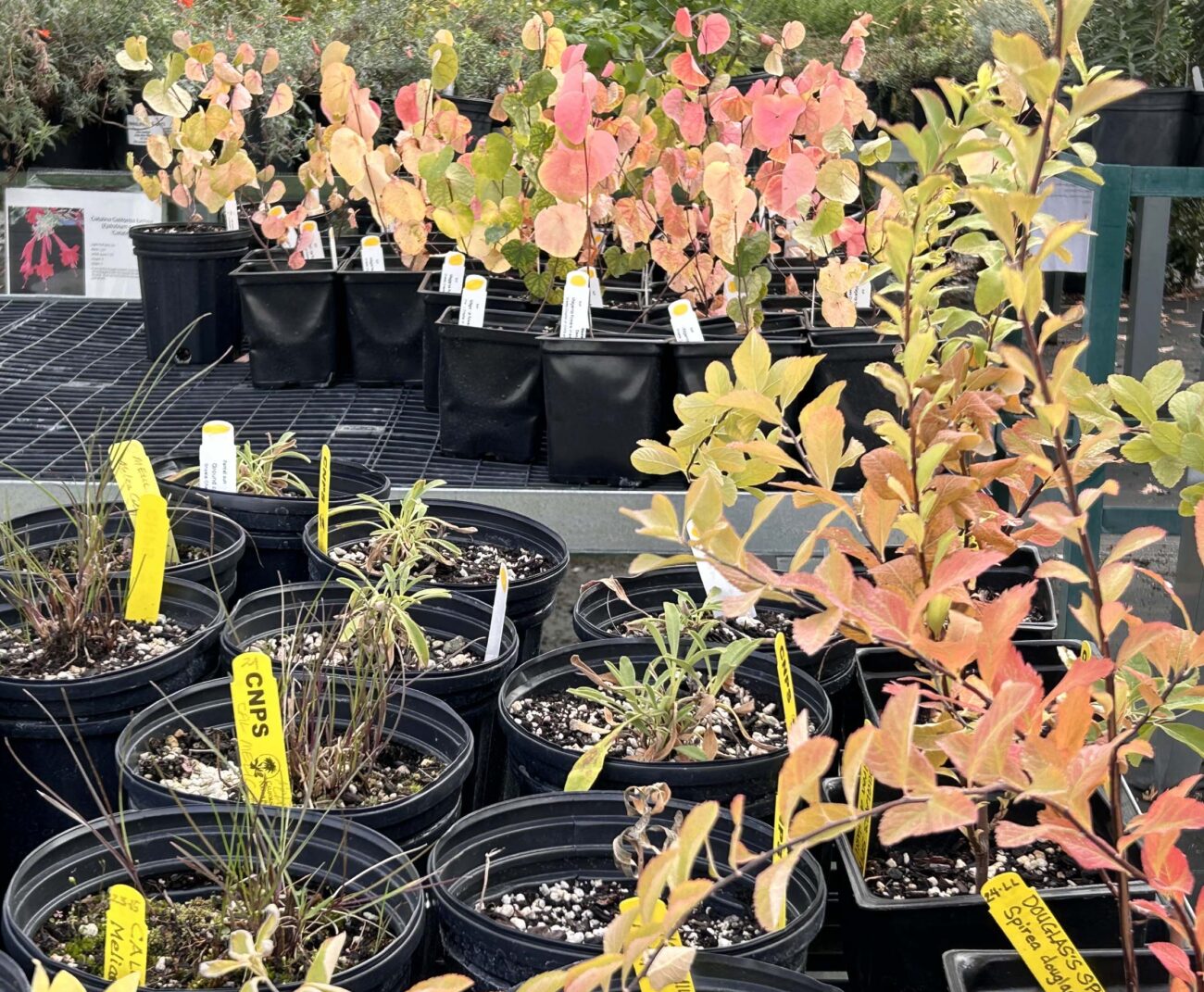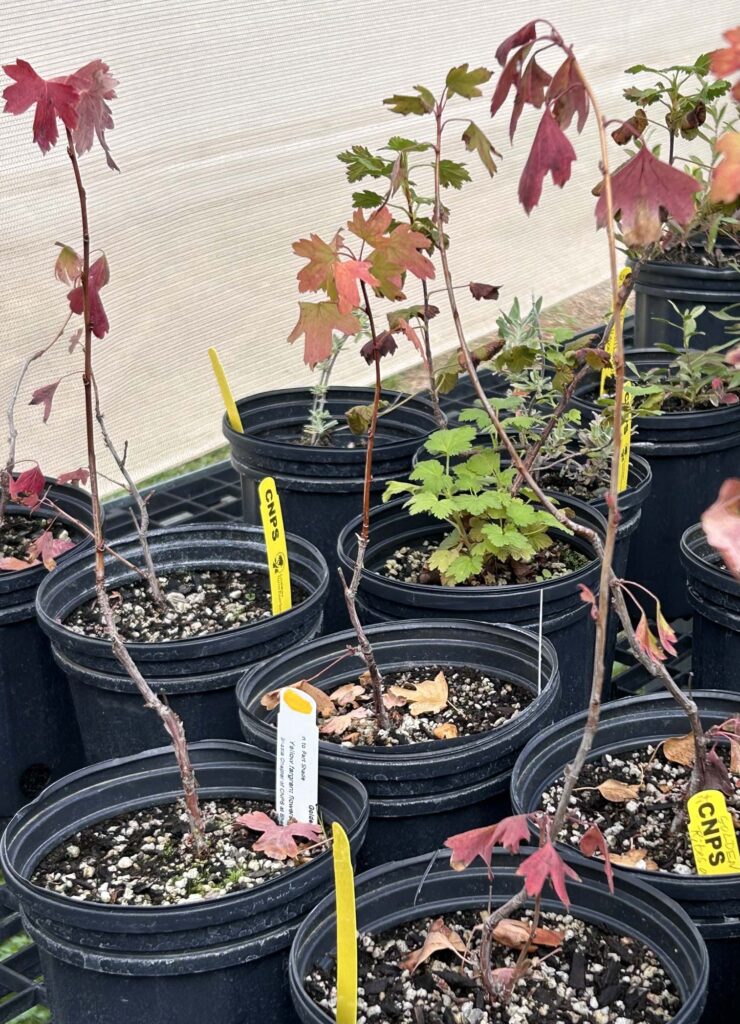
We all can be excused for thinking that fall is the end of fun in the garden for the year. But, fortunately for us at valley elevation, that is not really true! For the benefit of your native-plant gardening, we will keep our online store (https://cnps-shasta.square.site/) open through November .
Several of the deciduous shrubs in the nursery are showing their fall colors. Western redbud (Cercis occidentalis) puts on quite a show in the fall, even as seedlings! Douglas’ spiraea (Spiraea douglasii) is also showing some luminous hues. Both of these shrubs have pink flowers in the spring, but are even more colorful in the fall. As it turns out, golden currant (Ribes aureum) is also colorful in the fall! It is better known for its large yellow flowers and orange edible fruit in the spring, but now we know that its less-well-known beauty includes crimson leaves near Halloween.

The perennial native grasses are “waking up” and growing more vigorously now that the cool season is here. “Cool season plant” simply means a plant that bides its time over the hot dry months, and does its growing once air temps cool down and some rain arrives. Cool season plants such as perennial native grasses and succulents can even look quite “expired” over the summer. But they have root systems that are protected from completely drying out, even when the above-ground plant looks crisp. The only succulent we currently have is canyon liveforever; it also is a cool season plant.
Melica californica, or California melic, is also called onion grass for its onion-like bulblets at the ground surface. It is a narrow-bladed, graceful grass that grows well in semi-shade beneath oaks, with no supplemental water once established. It is a good choice for low-maintenance areas under trees and shrubs. According to pollinator experts, having some low-maintenance areas (where mechanical blades never go) below native trees and shrubs allow butterflies and moths to complete their life-cycles and continue gracing our gardens with their beauty and pollinating benefits. Other perennial native grasses that you can find in our online store include California’s state grass, purple needlegrass (Stipa pulchra); deergrass (Muhlenbergia rigens); and blue wild-rye (Elymus glaucus).
Creeping sage (Salvia sonomensis) is also a good choice in low-maintenance areas under native shrubs and trees. It slows down on the top side in the fall, but the roots continue to grow in cool temps. It will produce many nearly one-foot-tall spikes of blue, bee-loved flowers in the spring.
Shasta Chapter’s nursery stock can be purchased at our online store (https://cnps-shasta.square.site/), and picked up at the Shasta College Horticulture office building #4500 at Shasta College, 11555 Old Oregon Trail in Redding through November. Depending on weather, we might keep it open into December, but for best results we recommend wrapping up your planting in November, if at all possible.
Happy planting! ~MaryAnn McCrary, Nursery Manager
